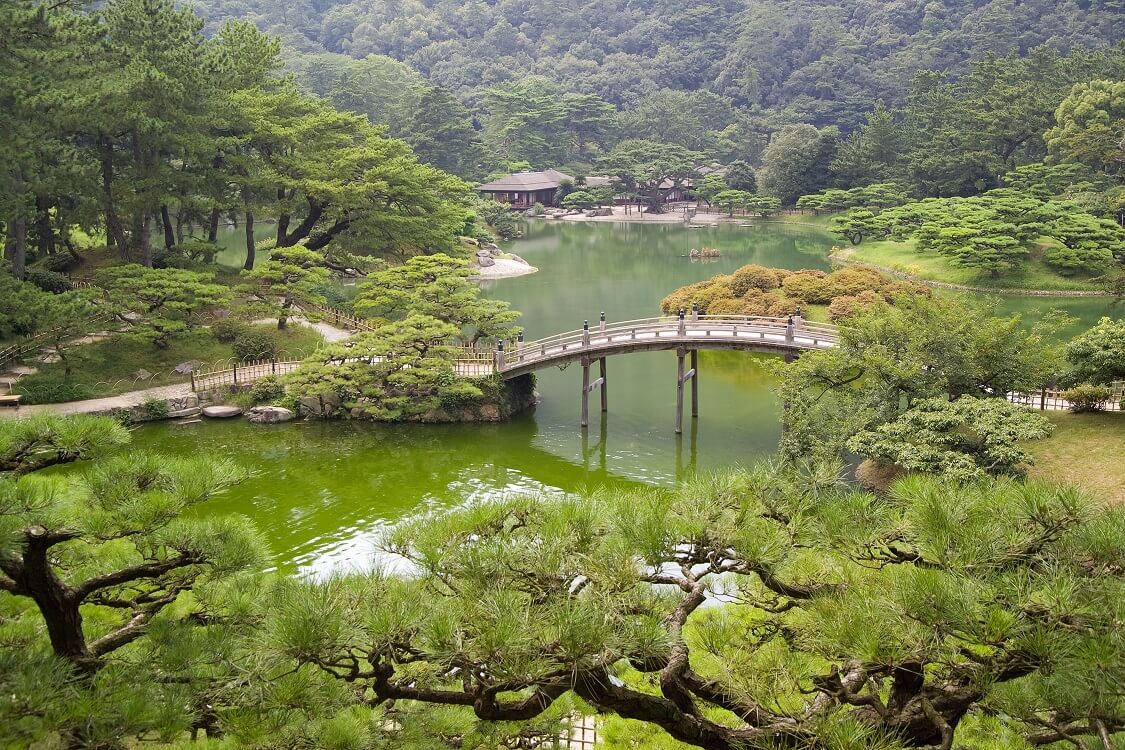You may not be entirely familiar with the word “niwaki”, but I’m almost certain you’ve seen its results before. And if you HAVE seen it before, I’m almost certain you thought to yourself, “man, that’s pretty cool” – or words to that effect, anyway.

The word is Japanese in origin, and simply means “garden tree”. While the literal translation may fall foul of your expectations, the implications of the term are decidedly diverse. Niwaki (pronounced ni-whack- ee) represents the Japanese art of tree trimming; in the land of the rising sun, gardens are viewed more as themed landscapes than as simple outdoor spaces. Through niwaki, gardeners can create shapes, forms and moods from their greenery to establish a unique atmosphere.
Perhaps the most famous forms of niwaki are cloud trees – you’ve probably seen them amongst the cherry blossoms circling the outskirts of the world famous Himeji castle. The foliage of a cloud tree is trimmed, pruned and shaped to match the appearance of – yup, you’ve guessed it – clouds. Cloud designs are usually meant to invoke a feeling of peace and tranquillity, but given their use amongst some of Japan’s great pieces of architecture, can also denote status and elegance.

Niwaki artists also use their tools to manipulate the tree bark, using grizzly and gnarled carvings to make them look older or as though they’ve been struck by lightning. At its core, niwaki is an expressive art; a gardener reflected in their foliage, if you will. It’s an appealing concept that has not only woven itself into the fabric of Japanese culture, but has been exported across Europe as a symbol of elegance.
Of course, the laymen among us are nowhere near capable of creating such displays on a towering pine tree or trimming a cloud-scape into any old oak. It takes a seasoned student of niwaki to attempt floral architecture on that scale. For beginners, specimens such as the Ilex crenata can present a sympathetic beginning to a lifelong hobby. These plants generally come with predetermined clouds, balanced on short but strong branches that require little maintenance. Thanks to their slow growth speed, crenata only truly require trimming up to three or four times a year. This sort of plant is perfect for niwaki newcomers to practise precision and delicacy in their trimming. Think of it a little like paint by numbers; the structure has been built for you, allowing you the freedom to practise the basics.
As your understanding of the breadth and depth of niwaki develops, along with your trimming technique, the challenges will naturally grow larger and greater. Seasoned niwaki artists can establish the design of a pre-ordained llex crenata in self-grown trees, taking ownership of every branch and bud to sculpt their perfect arrangement. Professionals are hired during the winter months to maintain forests and public displays, stripping discoloured needles from pine trees and using ropes to adjust the angle of branches.

For many, niwaki needn’t be a career but simply a hobby; a form of expression akin to writing or painting. What starts with an aesthetic appreciation of the skill may progress to owning an atmospheric table-top bonsai tree, and sometimes culminates in an entire garden designed from the roots to create the perfect outdoor setting. Niwaki represents the purest and most romantic form of gardening to millions around the world, and it’s easy to see why. There must be fewer senses of satisfaction greater than standing in a fully grown garden in which you have influenced every leaf, branch and bud.
If you have an interest in niwaki, drop us a comment below and tell us about it!
–
Ross works in the Product Loading department and gets to see all the weird and wonderful products that pass through Primrose. Ross is a life-long Southampton fan and favours jazz music, reading and a quiet place to enjoy them.